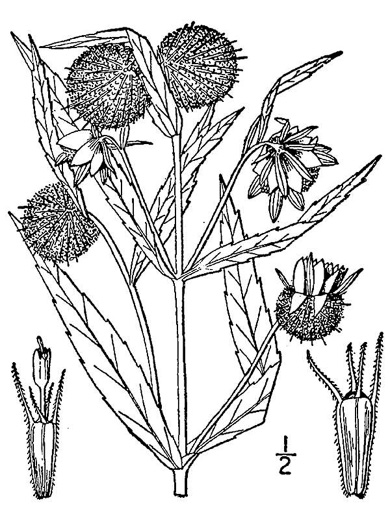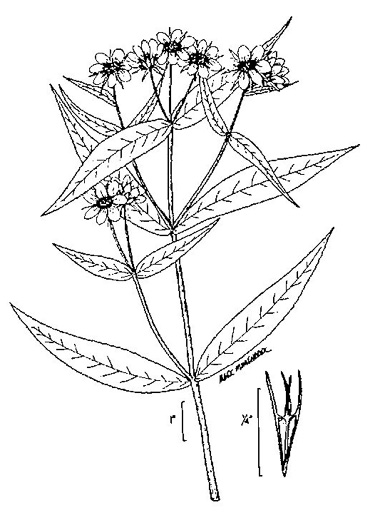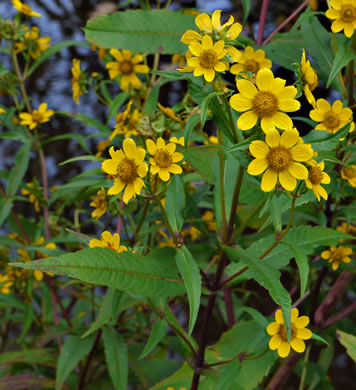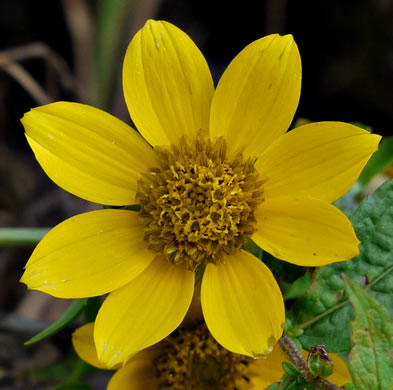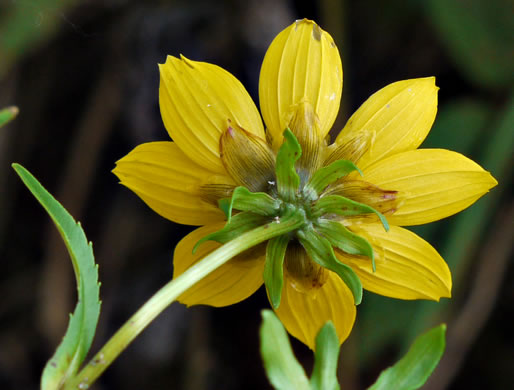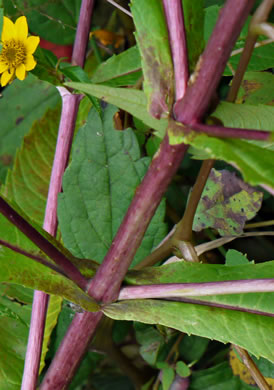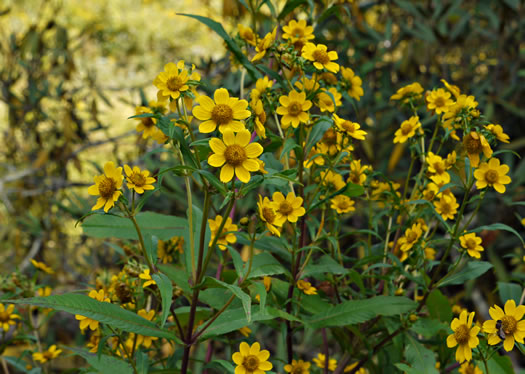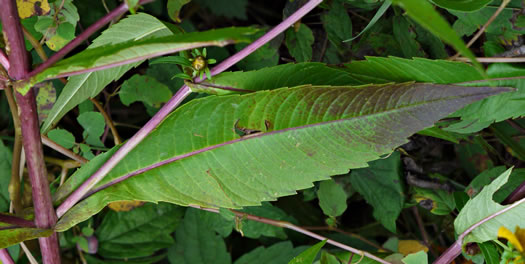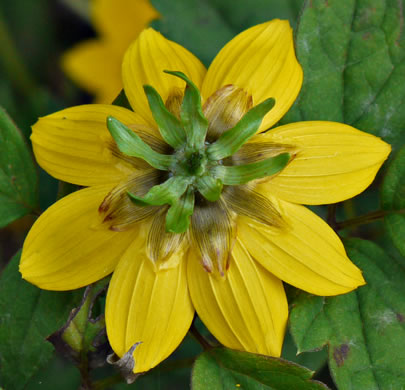Spermatophytes (seed plants): Angiosperms (flowering plants): Eudicots: Core Eudicots: Asterids: Campanulids: Asterales
WEAKLEY'S FLORA OF THE SOUTHEASTERN US (4/24/22):
Bidens cernua
FAMILY
Asteraceae
Go to FSUS key
Dig deeper at SERNEC, a consortium of southeastern herbaria.
Read more about Nodding Beggarticks at Vascular Plants of North Carolina.
SYNONYMOUS WITH
PLANTS NATIONAL DATABASE:
Bidens cernua
FAMILY
Asteraceae
SYNONYMOUS WITH Flora of North America north of Mexico, vol. 19-20-21 (2006)
Bidens cernua
SYNONYMOUS WITH VASCULAR FLORA OF THE CAROLINAS (Radford, Ahles, & Bell, 1968) 179-70-002:
Bidens cernua FAMILY Asteraceae
SYNONYMOUS WITH Manual of the Southeastern Flora (Small, 1933, 1938)
Bidens cernua
COMMON NAME:
Nodding Bur-marigold, Nodding Beggarticks
To see larger pictures, click or hover over the thumbnails.
JK Marlow jkm120920_009
September Washington County VA
Virginia Creeper Trail
6-8 ray flowers to 0.6" long, or none. Disk yellow, hemispheric, per Wildflowers of Tennessee, the Ohio Valley, and the Southern Appalachians (Horn, Cathcart, Hemmerly, & Duhl, 2005).
JK Marlow jkm120920_014
September Washington County VA
Virginia Creeper Trail
Leaves sessile and sometimes connate at the base, usually toothed, per Wildflowers of the Southern Mountains (Smith, 1998).
JK Marlow jkm120920_022
September Washington County VA
Virginia Creeper Trail
Lvs sessile, lance-linear to lance-ovate, coarsely serrate to almost entire, per Wildflowers of Tennessee (Carman, 2005).
JK Marlow jkm120920_025
September Washington County VA
Virginia Creeper Trail
Outer involucral bracts leafy, typically surpassing the disk, per Wildflowers of Tennessee, the Ohio Valley, and the Southern Appalachians (Horn, Cathcart, Hemmerly, & Duhl, 2005).
![]() COMPARE
involucral bracts of Bidens and Coreopsis
COMPARE
involucral bracts of Bidens and Coreopsis
WEAKLEY'S FLORA OF THE SOUTHEASTERN US (4/24/22):
Bidens cernua
FAMILY
Asteraceae
SYNONYMOUS WITH
PLANTS NATIONAL DATABASE:
Bidens cernua
FAMILY
Asteraceae
SYNONYMOUS WITH
Flora of North America north of Mexico, vol. 19-20-21
Bidens cernua
SYNONYMOUS WITH
VASCULAR FLORA OF THE CAROLINAS (Radford, Ahles, & Bell, 1968) 179-70-002:
Bidens cernua
FAMILY
Asteraceae
SYNONYMOUS WITH
Manual of the Southeastern Flora (Small, 1933, 1938)
Bidens cernua
If a search such as "Carex leptalea var. leptalea" doesn't deliver the results you want, try "Carex leptalea".
Or, to minimize chances of a misspelling, try just "Carex le".
Less is more: If "pencil flower" doesn't deliver the results you want, try "pencil".

